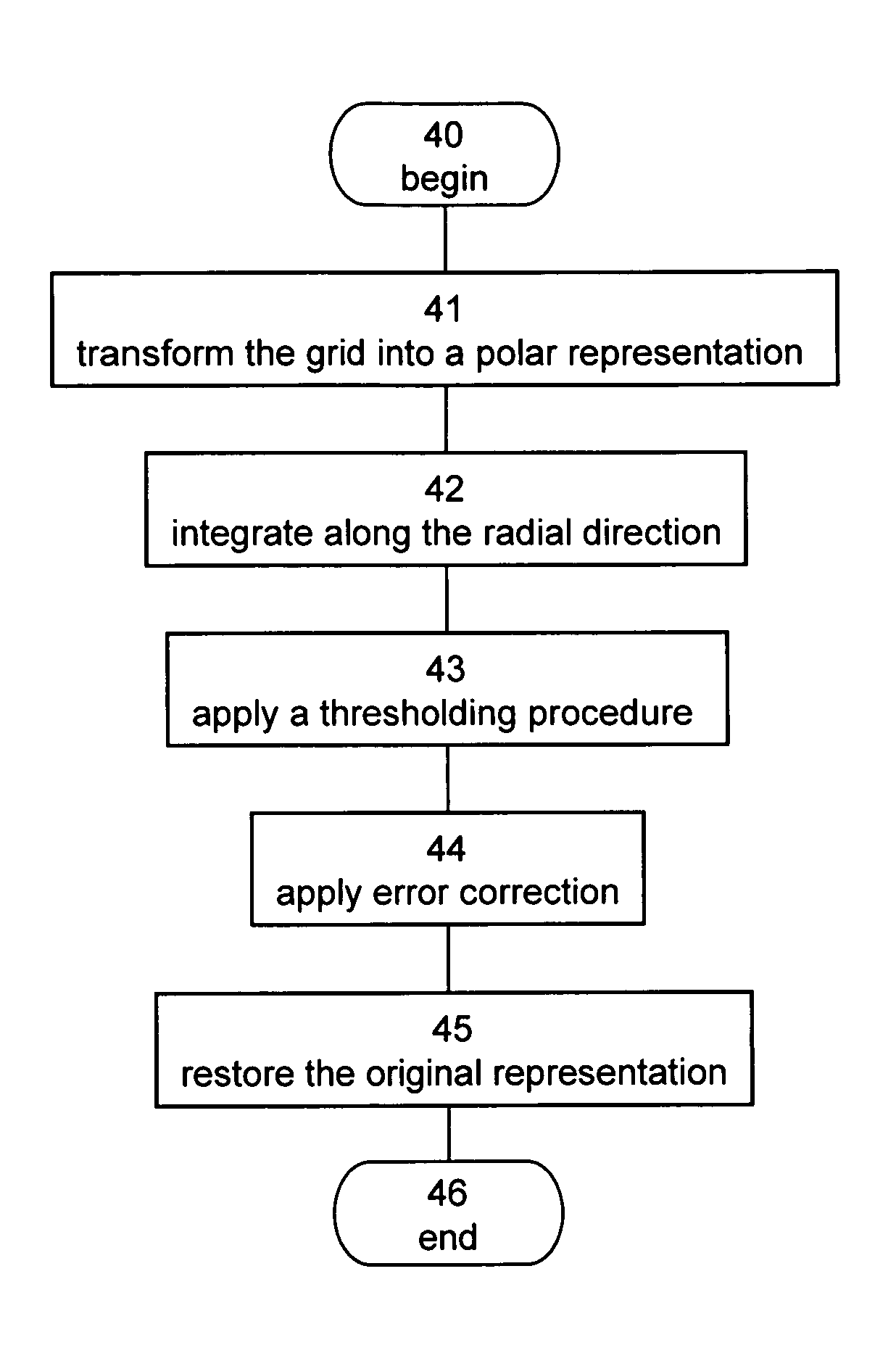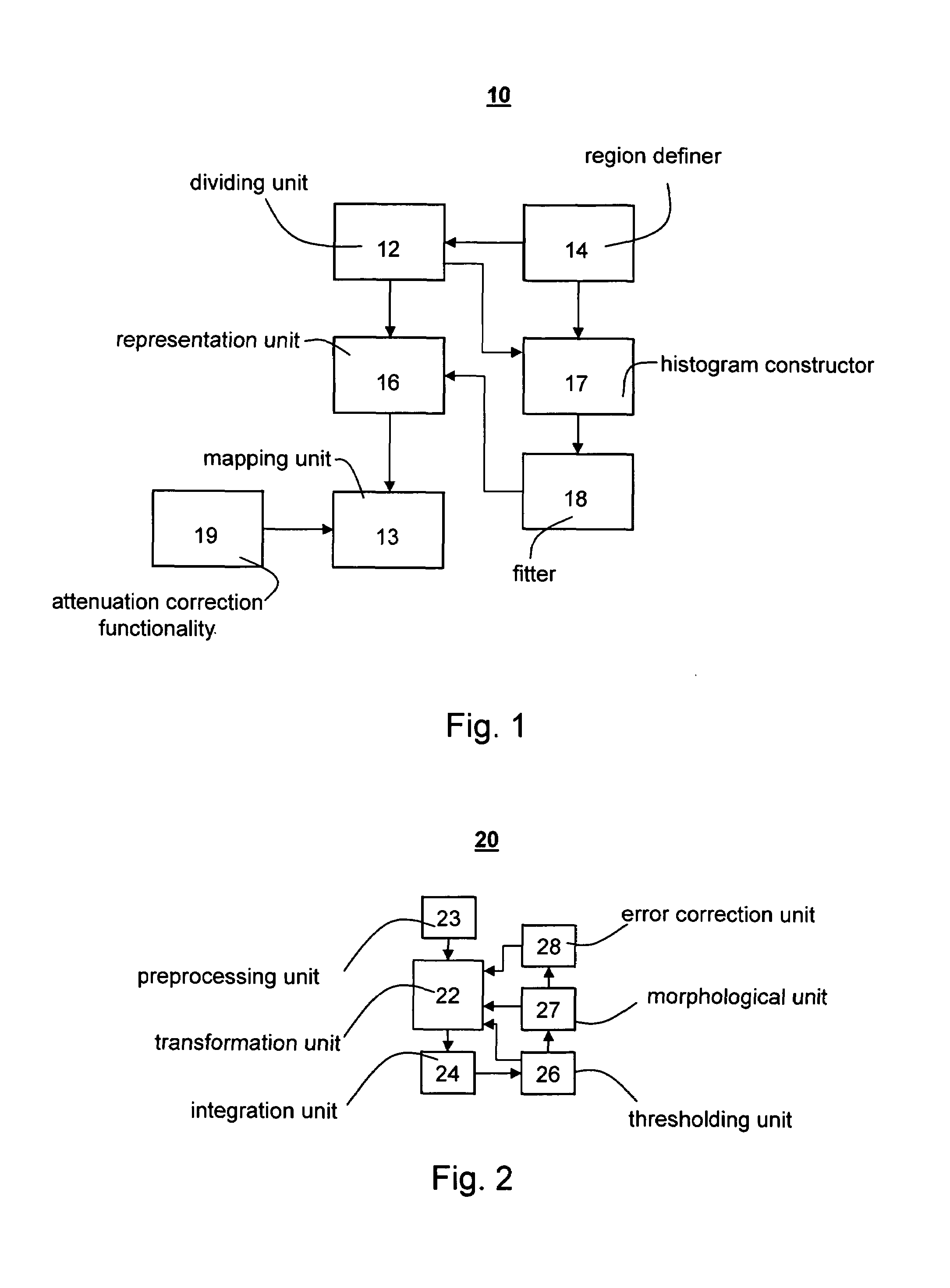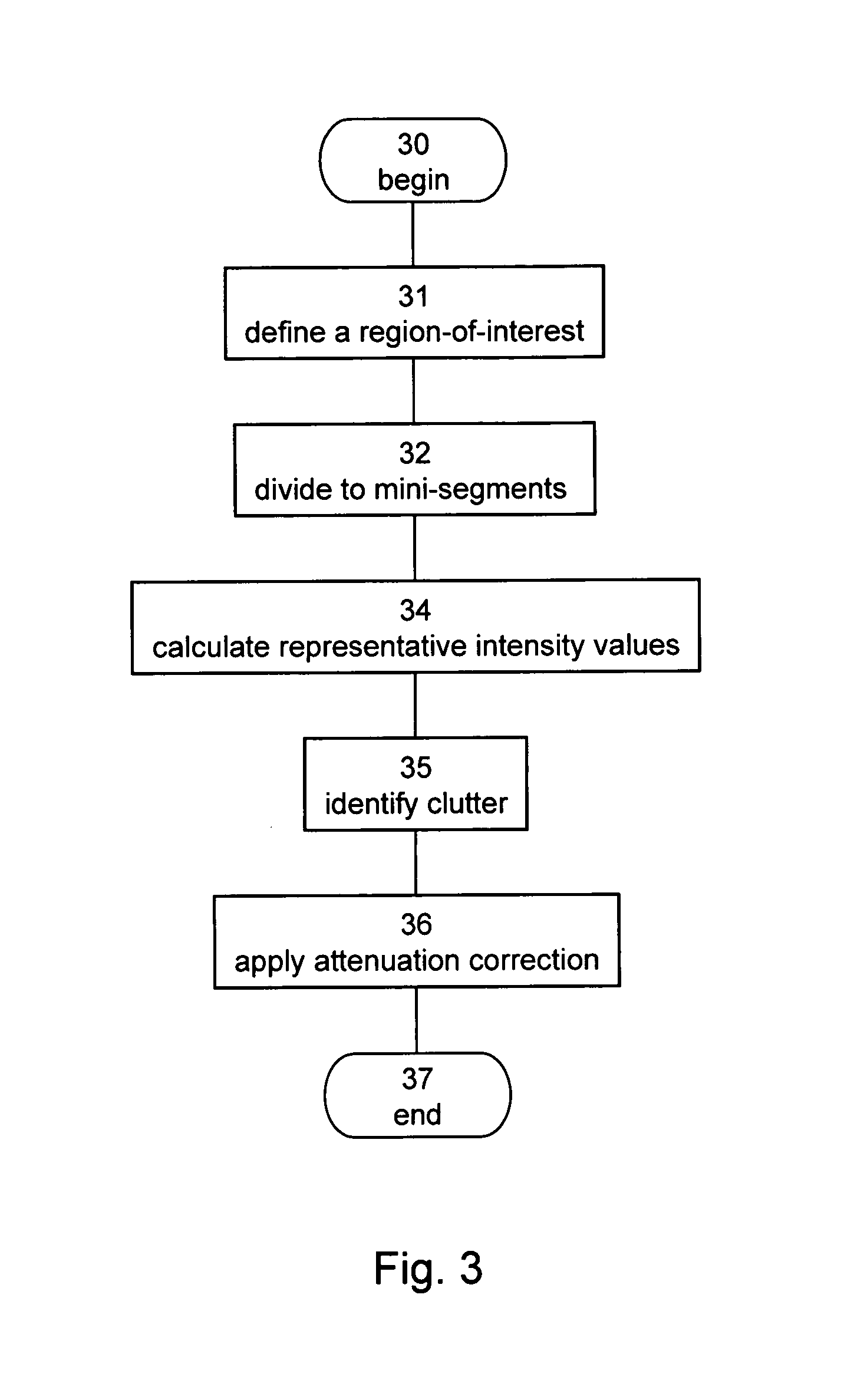Methods and apparatus for analyzing ultrasound images
a technology of ultrasound images and methods, applied in image data processing, instruments, character and pattern recognition, etc., can solve the problems of poor resolution, compromising the clinical utility of images of any patient, and difficulty in acquiring good quality images in patients with poor acoustic windows
- Summary
- Abstract
- Description
- Claims
- Application Information
AI Technical Summary
Benefits of technology
Problems solved by technology
Method used
Image
Examples
example 1
Detection of the Endocardial Boundary in Contrast Echocardiography
[0187]The teachings of the present embodiments were employed for detecting the endocardial boundary in cine-loop ultrasound images produced during contrast echocardiography in low mechanical index scenario. The cine loop was provided in Cartesian coordinate system. As further demonstrated below, the application of the teachings of the present embodiments allows an automatic outlining of the endocardial boundary to a high level of accuracy, although the signal-to-noise ratio of the image was considerably low.
Materials and Methods
[0188]The main obstacle in the automatic detection of the LV endocardial boundary in the low mechanical index scenario is the low signal-to-noise ratio which characterizes the image. Basically, the reduction of strong noise and speckle by low-pass filtering may be performed by temporal filtering and / or spatial filtering in different directions. Strong temporal filtering would ca...
example 2
Attenuation Corrections
[0261]The teachings of the present embodiments were employed for calculating attenuation corrections on cine-loop ultrasound images produced during contrast echocardiography in low mechanical index scenario.
Materials and Methods
[0262]10 cine-loops of contrast echocardiograph images were recorded from seven different ICCU patients. The cine-loops were in apical four-chamber and apical two-chamber views. The data have been collected using the equipment and methods described in Example 1 above.
[0263]In each cine-loop, the LV cardiac muscle has been divided into segments (i)–(vi) as described in Example 1 above. Each segment has been categorized by cardiologists into one of three groups: normal, hypokinetic or akinetic. Out of the 60 segments (in 10 cine-loops), 38 have been defined as normal, 7 as hypokinetic and 15 as akinetic. Due to the small number of hypokinetic segments, most of the analysis has been performed using two categories: normal an...
example 3
Perfusion Quantification
[0280]The teachings of the present embodiments were employed for performing quantitative evaluation of local perfusion in the left ventricle. The procedure was applied to cine-loop ultrasound images produced during contrast echocardiography in a low mechanical index scenario without coherent contrast imaging. As further demonstrated below, the application of the teachings of the present embodiments allows an automatic quantification of local perfusion, even for low signal-to-noise ratio ultrasound images.
Materials and Methods
[0281]The boundary between the LV cavity and the myocardium was automatically defined, by the method described in Example 1 above. The Cartesian and polar representations of the boundary for the p-th frame were stored in the binary matrix Bp and the vector Rp(θ′), respectively. A region-of-interest was defined for each frame separately, and was further divided to 45 mini-segments defined according to the local wall-motion....
PUM
 Login to View More
Login to View More Abstract
Description
Claims
Application Information
 Login to View More
Login to View More - R&D
- Intellectual Property
- Life Sciences
- Materials
- Tech Scout
- Unparalleled Data Quality
- Higher Quality Content
- 60% Fewer Hallucinations
Browse by: Latest US Patents, China's latest patents, Technical Efficacy Thesaurus, Application Domain, Technology Topic, Popular Technical Reports.
© 2025 PatSnap. All rights reserved.Legal|Privacy policy|Modern Slavery Act Transparency Statement|Sitemap|About US| Contact US: help@patsnap.com



